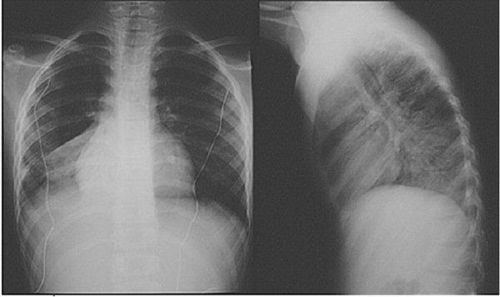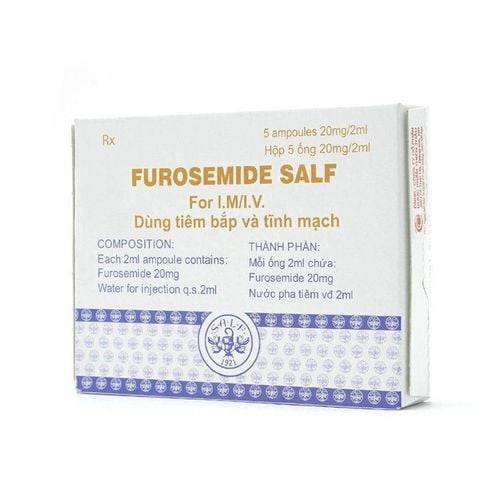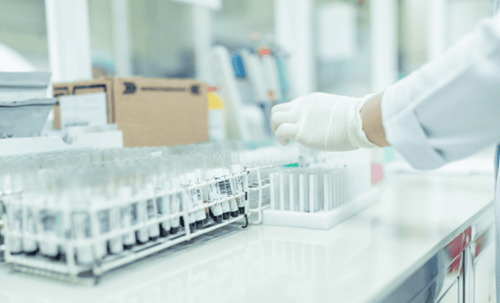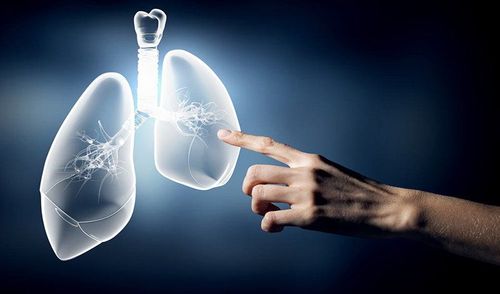This is an automatically translated article.
Whole lung capacity measurement can be performed using a variety of techniques. In particular, measuring total lung capacity by nitrogen washing method is now quite popular, easy to perform, low risk for patients and widely applied.
1. What are the methods of measuring total lung capacity?
Total lung capacity is one of the important factors that greatly affect the respiratory capacity of the body. This is an anatomical factor and cannot be changed. In some diseases, when the cause of the respiratory failure to meet the needs of life is still unknown, the value of total lung capacity should also be investigated to rule out other causes.
Since then, many methods of measuring total lung capacity are presented with different principles:
Measuring total lung capacity through measuring respiratory function: This is a kinetic method, the value of total lung capacity calculated indirectly through the values of the airflow. However, the biggest limitation of this method is that it is not possible to measure the residual gas in the lung parenchyma after the patient has exhaled with full force. This volume also occupies a relatively significant volume of the total lung capacity. Measurement of total lung capacity by X-ray film: By taking a conventional chest X-ray, the anatomical parameters of the basic components in the thorax will appear on the film, from which it can be calculated relatively. lung capacity. However, the representation of structures in space on the plane will lead to the possibility of considerable error; At the same time, the calculated value also depends a lot on the lung capacity measurement technique, the patient's position. So this method is now deprecated.

Chụp X quang phổi là một phương pháp đo dung tích toàn phổi
Measurement of total lung capacity by air injection: This method uses gases as an indicator, for example helium and nitrogen. A certain amount of air with a known volume is pumped into the inhaled air stream into the lungs. Then, the concentration of that gas will be monitored and measured again in the exhaled air volume, thereby calculating the total lung capacity. This is also a kinetic, physiological method. However, this method still does not determine the amount of residual gas, the area that does not play a role in gas exchange in the lungs.
2. What is total lung capacity measurement by nitrogen wash method?
Whole lung capacity measurement by nitrogen wash method is a method of measuring lung volumes using subtraction. After each end of expiration recorded on the spirometer used in the respiratory function, the percentage (%) of the nitrogen concentration (N2) will be re-measured using the formula as the difference of 1 minus take the percentage of the concentration of the mixture of O2 and CO2 with the equation: %N2 = 1 - %O2 - %CO2
During the procedure, the source of gas used to inhale for the patient is 100% O2; Accordingly, in subjects with a history of chronic obstructive pulmonary disease (COPD), this technique should be performed with caution because it will increase the risk of excess oxygen but more carbon retention.
In a single lung capacity measurement using the nitrogen wash method, it should be performed twice to give a more accurate result. However, between two measurements, it is necessary to wait at least 15 minutes for the respiratory function to return to normal with the room gas mixture, to avoid prolonged breathing of pure oxygen, which can easily lead to oxygen poisoning and increase the risk of pulmonary fibrosis. .

Cần thực hiện đo dung tích toàn phổi bằng phương pháp rửa Nitơ 2 lần để có kết quả chính xác
3. What are the indications for performing total lung capacity measurement by nitrogen wash method?
When a patient is suspected of having restrictive lung disease-type ventilation disorder as a result of the following conditions, a total lung capacity measurement with nitrogen lavage should be considered:
Pulmonary function measured There are signs of reduced function of the thoracic cavity, limited pattern, and the ventilation function is completely normal. There are signs of congenital or acquired thoracic deformity: after chest trauma, after surgical intervention in the area of thoracic surgery , spine Serves medical assessment in a comprehensive respiratory function study However, despite the noninvasive technique, there are certain acute conditions where total lung capacity measurement cannot be performed. Nitrogen washing methods such as hemodynamic disturbances, respiratory failure due to all causes, lung injury due to pneumonia, pulmonary edema, damage to the pleura, chest wall, nerves... In addition, if the patient is uncooperative , do not understand how to perform, the patient is comatose can not perform this technique.

Bệnh nhân suy hô hấp chống chỉ định thực hiện phương pháp này
4. How to perform lung capacity measurement by nitrogen wash method?
Step 1: Prepare
Manpower: A pulmonologist or technician skilled in respiratory function and an assistant nurse prepares the patient and delivers the equipment. Means: Respirometer type with function of measuring whole lung capacity by method of nitrogen washing and bacterial filter attached to mouthpiece, 100% O2 breathing air source. Patients and relatives were clearly explained the purpose and procedure of measuring total lung capacity by nitrogen washing method. The patient can stand or sit in a chair with a straight back, wearing loose clothes so that breathing can be performed comfortably and maximally. This position is kept fixed during measurements to limit errors. Step 2: Carry out
Select the working mode on the respiratory function meter, which is to measure the total lung capacity by nitrogen wash method. The patient is ordered to inhale and exhale rhythmically according to normal needs. Avoid talking, sneezing, coughing or interrupting during this process. If it occurs, it should be terminated and re-evaluated to record a physiologically stable breathing range of the patient.

Hướng dẫn người bệnh hít thở đúng cách trong đo dung tích toàn phổi rất quan trọng
After determining that the breathing rate is stable, signal to the patient to use all the respiratory muscles to perform a full inhalation and then a full exhalation. As soon as the patient has just exhaled as hard as he can, the doctor or technician quickly presses the key to pump the gas mixture and asks the patient to continue to inhale as deeply as possible followed by the maximum exhalation. This is to help the process of washing nitrogen gas in the lungs to take place faster. Observe the percentage of nitrogen (N2) concentration recorded on the monitor screen after each exhalation. The meter will automatically give an end signal if the result is below 1% after two consecutive measurements. Let the patient rest for 15 minutes and repeat the measurement procedure as above. Take the reported result as the average value of the two measurements. At the end of the measurement, signal the patient to breathe again as normal and can leave immediately. In summary, the results of total lung capacity measurement by nitrogen lavage method will indicate whether the respiratory dysfunction in the patient belongs to the group of lung volume-limited lung disease and whether there is an appropriate treatment. Although the measurement technique is quite simple and can be performed in any laboratory that can measure respiratory function in general, the determination of reliable results should be ensured based on the compliance and manipulation of the patient. measurer.
Vinmec International General Hospital with a system of modern facilities, medical equipment and a team of experts and doctors with many years of experience in medical examination and treatment, patients can rest assured to visit. examination and treatment at the Hospital.
To register for examination and treatment at Vinmec International General Hospital, you can contact Vinmec Health System nationwide, or register online HERE.
SEE MORE
Danger and curable of pulmonary tuberculosis Is pleural effusion dangerous? Acute pulmonary edema in children













